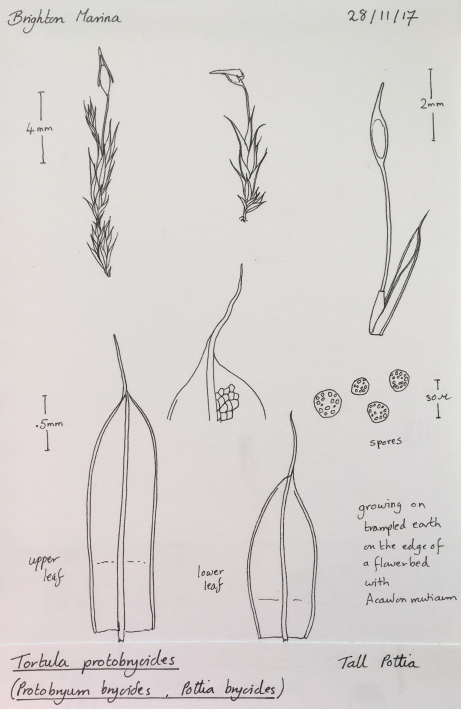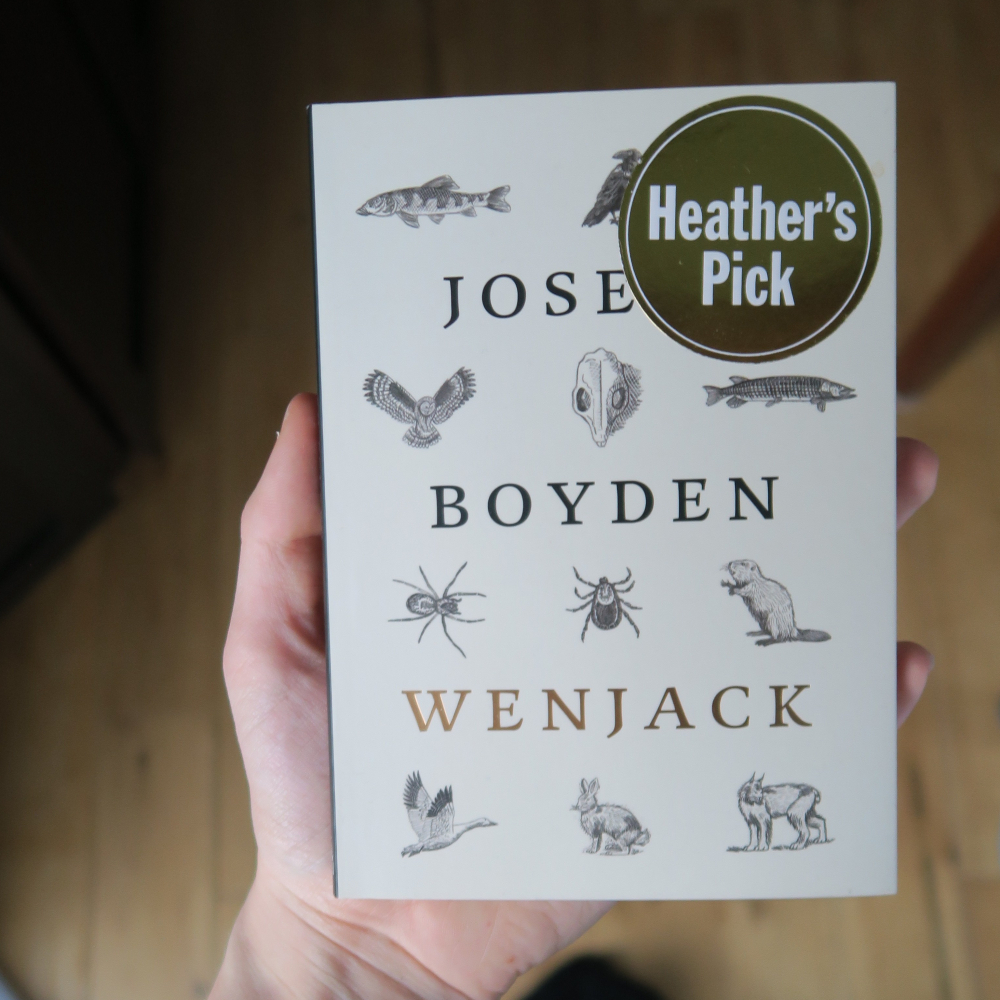I usually choose a sunny day to cycle over the cliffs from Brighton to Rottingdean but this was a drizzly Tuesday, chilly but not too windy. My mission was to look for the rare Acaulon triquetrum which has been found many times by numerous bryologists all along the clifftops between Brighton and Peacehaven but hasn’t been spotted this side of Rottingdean since 1923. This tiny moss fruits in the winter and as I had got my eye in on Acaulons, (or thought I had), having found A. muticum at Battle a few days earlier it was a good time to go looking.
Before I reached the cliffs I stopped to look at a trampled flower bed where a maze of footpaths and cycle tracks skirt Brighton Marina. It wasn’t an attractive spot but I collected a small patch of a tiny, untidy acrocarp with masses of capsules on short setae. Next to it was a patch of an even smaller moss which wasn’t fruiting. I took a grid reference, put the muddy lumps in a bag and carried on.
The next stop was an area of cobbles by a bus stop with a thick green grouting of bryophytes. At least five common mosses including Zygodon viridissimus were growing here and Didymodon fallax was on bare earth nearby.
There weren’t many other promising spots above the Marina so I cycled on to Ovingdean Cliffs briefly stopping by some benches where Funaria hygrometrica was predictably growing on a barbecue area.
As the path dipped towards Ovingdean Gap the trampled path started to look more interesting and I had to stop myself speeding downhill in order to check mossy patches. Some dull green Aloina aloides was just starting to fruit and Pseudocrossidium hornschuchianum was bright green. Both of these mosses have tightly curled leaf margins which must help them survive the parched conditions up here. Climbing out of the dip towards Rottingdean a Microbryum was fruiting abundantly so I collected some to check the spores later.
I had run out of collecting bags by now so I freewheeled down the last hill into Rottingdean. The return journey along the undercliff was speedy and sunny too according to my photo of Ovingdean beach huts. I don’t remember the sky being blue for long that day!
Back home I was quite baffled by the mosses from the flower bed but suspected that I had an interesting Microbryum from Ovingdean as I could see a peristome. I was about to travel to Wales so stuffed them all in my rucksack to give to Tom. The flower bed mosses turned out to be quite exciting; Tom identified the fruiting acrocarp with slightly lax leaves as Tortula protobryoides, the moss that eluded us at Stanmer in October. With it was Acaulon muticum but as it didn’t have capsules it could also be A. mediterraneum. I hadn’t found A. triquetrum but this was still a nice record.

I had collected two Microbryums. Along with the more familiar Microbryum davallianum var. davallianum which has spiny spores and no peristome was the rare Microbryum davallianum var. commutatum which has a peristome and smaller, slightly spiny spores. It has not been seen in East Sussex for forty years!

Many thanks go to Tom for spending the best part of a day identifying the mosses I collected.
Advertisements Share this:




